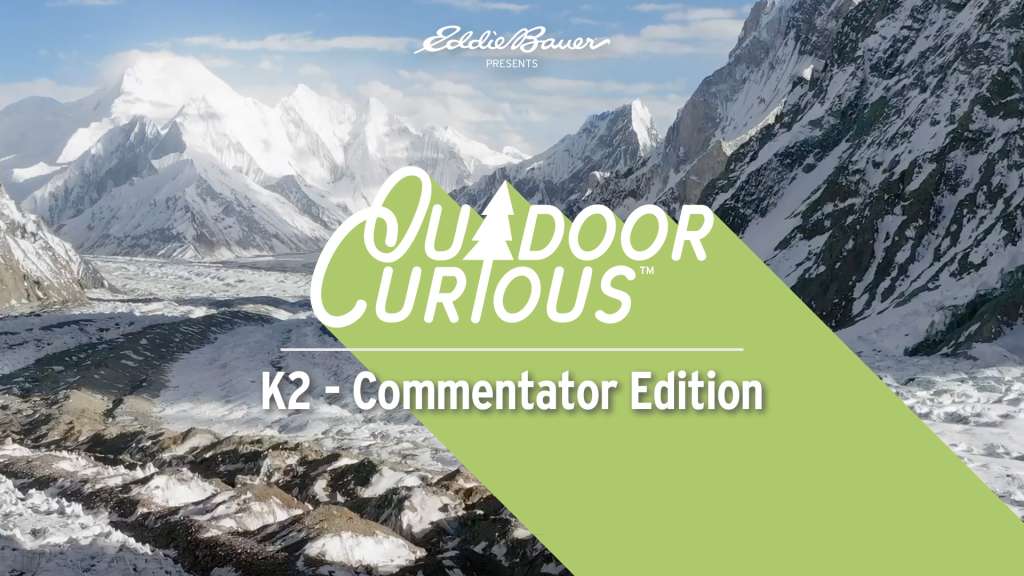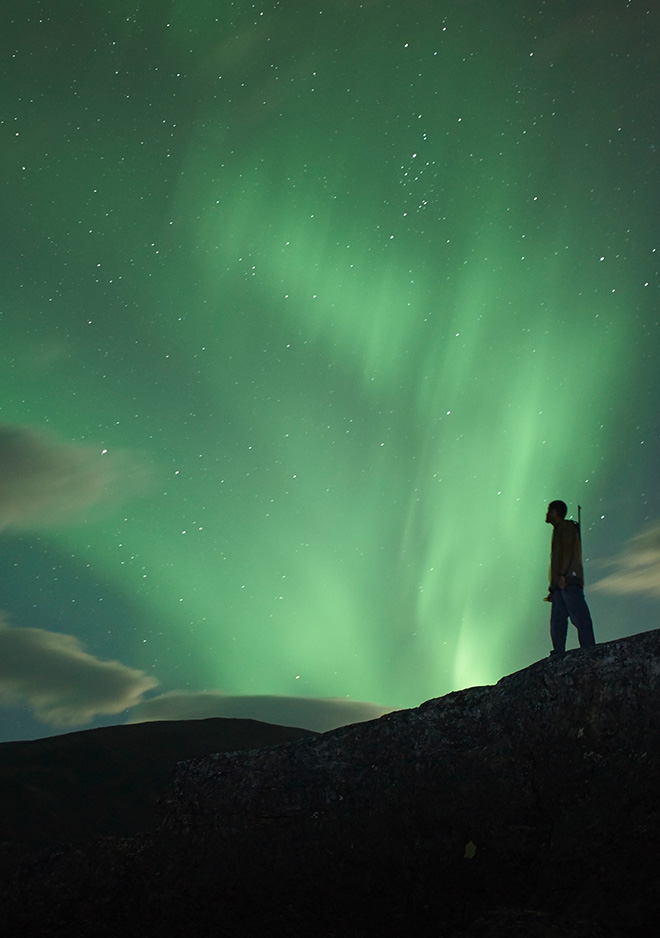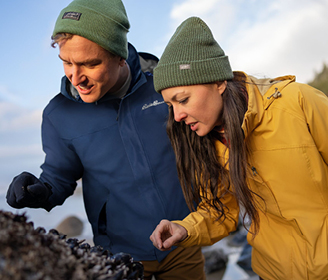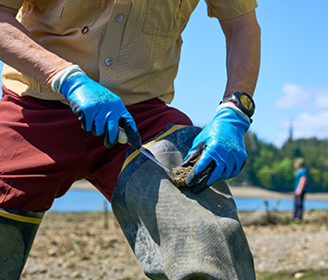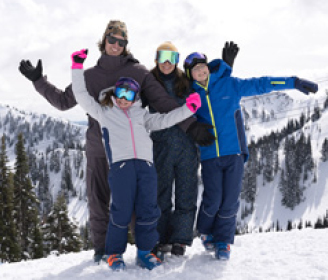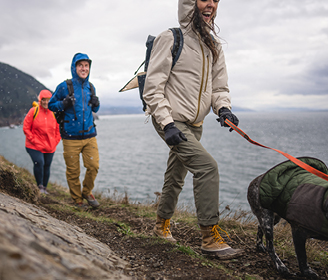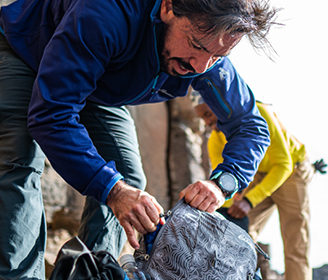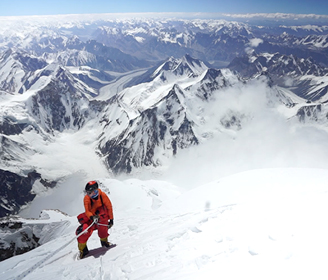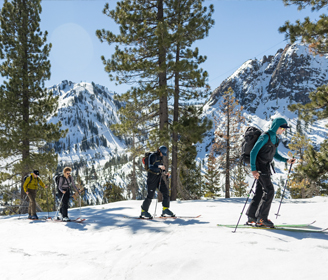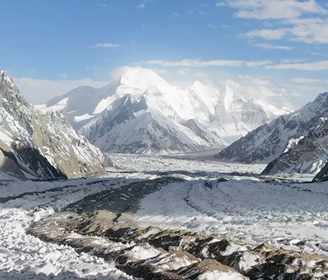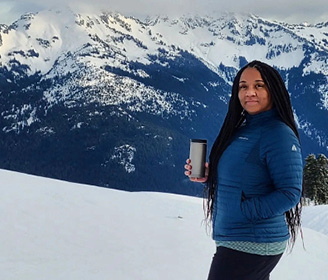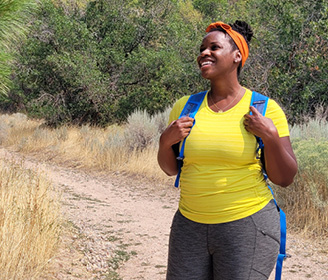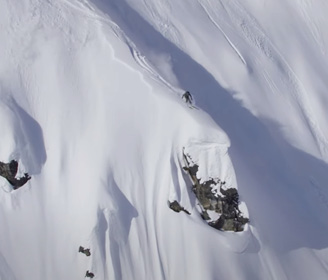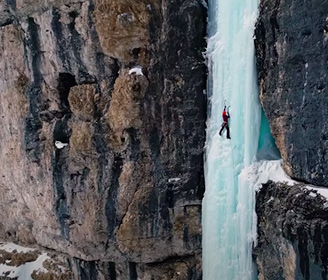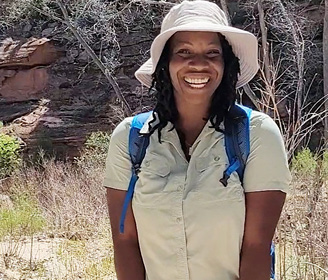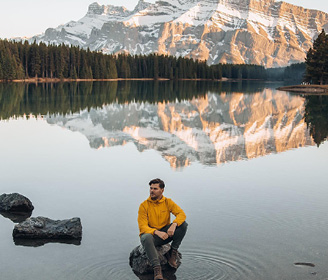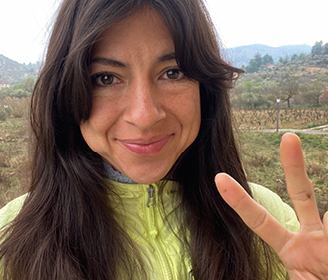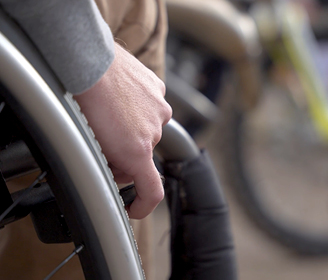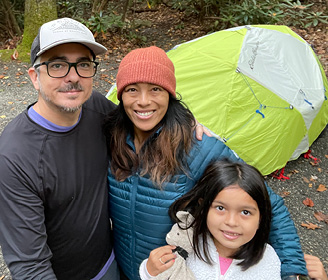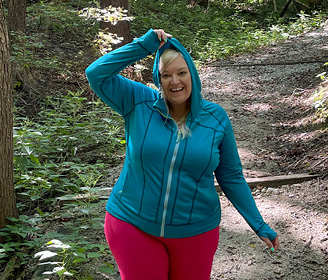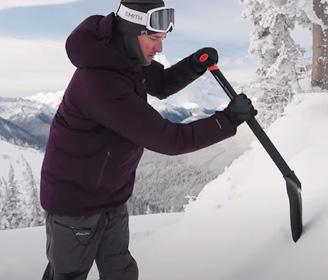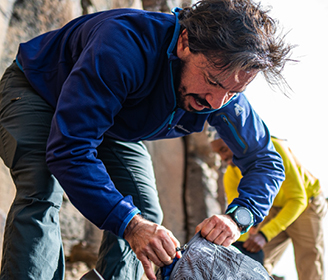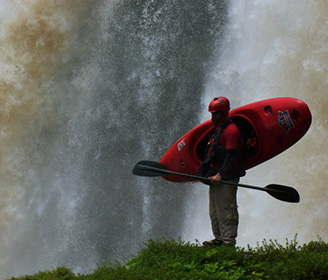You watched Adrian answer questions about his expedition on K2 in a previous episode of Outdoor Curious™. Now he’s back to answer your follow-up questions from the comment section in this “Commentator Edition” video. Can you visit K2 basecamp with climbing the mountain? What’s with people and their trash? Find out in this part two episode.
00:31 – Will the serac by the bottleneck ever fall off or slide off in its entirety?
No, I don’t think so. The way the serac is formed this huge, massive, thousands of feet thick glacier or compilation of snow that’s been packed over centuries, is slowly sliding off this cliff and chunks fall down every day. And that’s what creates the danger of that bottleneck serac. While I would expect it to continue to shrink over decades or centuries, especially in our current climate change window that we’re in, it’s hard to imagine it all going away. I think it will only become more risky to climbers not less risky.
01:15 – What’s the reason the East Face of K2 has never been attempted.
It’s incredibly steep and technical on all sides and that East Face is even more so, so if you imagine just the size and seriousness and steepness of a face like that, I think it is correct. Although, like I said, I haven’t gone back and researched but I don’t think there’s been a successful climb on that side. But it’s things like that that inspire me and excite me so much about our sport and our activity and our world. While so much has been done in high-end alpinism and climbing, there is still an infinite number of more climbs, new climbs to be done by future generations. So as we see new climbers coming up with better training, better coaching, better nutrition, better fitness, incredible equipment from companies like Eddie Bauer. And then on top of that, all the history of decades of ascents that have been done before them. I think we’re going to continue to see new incredible things that maybe the past generation couldn’t imagine and something like the East Face of K2 is exciting in that way.
02:26 – Hi, Adrian, love your videos. Have a question. I saw in one of your videos that your prep for altitude includes beet juice powder. I suffer from altitude sickness and have to take Diamox, along with the acclimatizing for several days before my backpacking trips in altitude above 8,000 feet. Did you find the beet extract powder of any help?
An interesting thing is did altitude science and high altitude physiology is still an area of study that needs so much more research. I know I’m often guilty of thinking like science should have it all figured out by now but the truth is, the number of people that go to altitude and the scientific studies that have been done at high altitude, they’re really tiny and they’re very difficult to perform and have controls and things like that. So really I would say, you’re already doing the correct thing, which is the single one thing that has been shown to be effective, to help acclimatization or to deal with altitude sickness. Acute mountain sickness, is the use of Diamox or the generic name is Acetazolamide. That, if prescribed by your doctor, is an effective tool to help your acclimatization. Everything else we use like beet extract, ginkgo biloba, kind of natural herbal supplements. I and others do think they have an effect but that effect has not been scientifically proven. Have fun, experiment with things like that. But with your doctor, discuss the use of Diamox or Acetazolamide if you know that you have trouble acclimatizing. The one other thing I’d say along those lines is the majority of us should be able to acclimatize to moderate altitudes, let’s say below 23,000 feet, without prescription medicines. It just takes us different lengths of time. The keys to true acclimatization are time, listening to your body and hydration and prescription medications like Diamox, Acetazolamide hopefully don’t need to be used unless there’s a reason for you going faster than your body truly should.
04:29 – I would be very interested in just explaining different mountains so I can understand the different types of routes and what they would be, like unclimbed peaks and what is known about them.
There are so many mountains that have yet to be explored. I think today we sometimes hear, especially in mainstream media about how mountains are overcrowded or perhaps you’ve seen photos of a mountain like Mount Everest, where it looks like people are almost in a line waiting to go up. And that can be true on a few standard routes on a few popular mountains. Things like the Denali, these really famous iconic peaks. One of the things I love about climbing and mountaineering so much is there are, I’m not gonna say millions, let’s say thousands of mountains that no one’s ever heard of, that no one goes to on an annual basis. And each of those mountains has an almost infinite number of different potential routes or ways that you can climb up them. The spirit of exploration in climbing and mountaineering is still so alive and well.
05:35 – First, congrats on summiting K2. That’s awesome. Especially with no O’s, you’re a beast and a legend. I’ve watched many documentaries on K2, the early expeditions by the Italians and the British were something. Hundreds of porters and tons of gear. Did you put out a documentary on your climb?
Wow. Well, that’s a great question because I get to tell you about this film that I made with the Eddie Bauer team. So we created a film called K2 Breathtaking, about my climb of the mountain in the summer of 2019 along with my Eddie Bauer teammate Carla Perez and filmed by Topo Esteban Mena along with our Sherpa team, Palden and Pemba. We had two Nepali Sherpa who were our teammates on the mountain, and they climbed on oxygen in order to give Carla and I the best opportunity to climb without supplemental oxygen. The film is available for free on Eddie Bauer’s YouTube channel. And I’m really proud of it. The trip was a really challenging one where so many things went wrong in the initial weeks, but we plugged away, we didn’t give up. K2 Breathtaking on Eddie Bauer’s YouTube channel.
06:48 – If your team made the choice to clean up your K2 venture, which is essentially of a similar height to Everest, why can’t the rest of the world clean up their stuff on Everest? Why the discrepancy in climbing best practices in ecological stewardship? What’s wrong with everyone while on Everest? It seems morality and other amiable qualities go out the window for a vast majority of Everest visitors.
This is a big one. This is something I care so much about. Mountains are becoming more and more popular, just like most of the beautiful, inspiring places in our world, whether that’s surf breaks or mountains or rivers or cultural sites, they’re becoming more popular. And I think that’s a really good thing that people are being inspired by the beauty of our world and wanting to go see those places for themselves and do things like climbing and tracking. So I am very much for more people going to the beautiful mountains of our planet. With that said, a challenge of more people is potentially more impact. And if we destroy the places we love, then they no longer sacred or beautiful for future generations. The problem of things like trash and human waste is not an Everest problem. It is an every popular mountain problem that has not yet seen strict regulation, I guess, I should add. 25 years ago, things like trash and human waste were an issue on popular mountains in places like the United States, in places like South America and places like Europe but governments got serious about, not only setting regulations that require you to remove things like trash or required you to use something like WAG bags. You actually poop in a bag and take your poop off the mountain. And you not only need to make rules about what someone is meant to do, you also need to enforce those rules. And that means usually government rangers, agents, climbing rangers, things like that, on mountains to ensure the rules are followed. And it means strict regulation, especially of commercial operators, companies like mine who make money on these mountains. I think oftentimes, when money is involved, ethics, some people might choose not to follow as closely. And the Everest example or K2 is in many ways a dirtier mountain than Everest. There is less regulation on K2 than there is on Everest. And it’s a major issue. And it was a major issue for Carla and me. Both of us got incredibly sick in Pakistan on K2. The problem is that people, especially non-professional climbers, when they’re on mountains like Everest and K2 and they’re very, very high on these mountains. They end up getting to a point where they feel like they are fighting for their lives and they are fighting for their lives. Human beings are not meant to be at places like the summit of Everest or K2. That’s what makes them so incredible to try to attain these summits. But when you are fighting for your life, things like taking down your trash or pooping in a bag and carrying your poop down, might seem less important to you, in the moment when you are not sure whether you will live or die. And that’s why commercial operators, logistics companies in the country, guide companies like mine who understand the risks better. We need to put infrastructure in place which means more Sherpa, more mountain guides, more oxygen so that when our, perhaps non-professional climbers feel like they’re fighting for their lives, we still have enough energy and wherewithal to take care of these potential issues, to remove trash, to remove human ways to take down camps, to take down extra oxygen, empty oxygen bottles. It’s on us to do those things but those things cost money. So as more people want to go to the mountain and competition is forcing prices of expeditions lower and lower and lower. The things those lower cost operators are getting rid of, is the extra oxygen and personnel to ensure that the mountain is kept clean. So if you ever dream of going to these place, I’d just encourage you to do your research. Don’t choose the lowest cost operator on these mountains. Choose someone that you believe in their ethics and their belief in the importance of sustainability because it is up to us to keep these mountains clean, sacred, pure.
11:07 – Nobody asked about the House Chimney and how difficult a part of the climb that is.
So the House Chimney, for those not familiar, is a technical, rock climbing pitch high up on the Abruzzi routes on K2. To free climb, to climb like we do, rock climbing here in the United States, when we go to Yosemite using only our hands and feet for uphill progress and then using a rope only to catch us if we fall. The House Chimney would be a really difficult pitch of rock climbing in that style for most mountaineers. And so over the years, actually ladders, aluminum ladders have been put in the House Chimney to allow non-professional rock climbers at very high altitude to be able to get through that part of the climb. And it’s just considered very difficult but there’s a catch, which is Carla, Topo, Palden, Pemba, myself, we didn’t climb the Abruzzi route on K2. We climbed a route called the Cesen route. The Cesen route is actually a more difficult route on the mountain than the Abruzzi. It’s got more technical ice climbing, rock climbing and it’s kind of just more consistently steep. We actually began by going to the Abruzzi route. That was the route the other teams on the mountain had chosen to go on. But on our very first day climbing between Base Camp and Camp One, we actually had a close call with a pretty sizable avalanche. And we made the decision that, even though the Cesen would be more technically difficult to climb, we all felt we were good technical climbers and that that route had a little bit less objective hazard from avalanches and from all the snow.
12:46 – Can you visit the Base Camp without climbing or wanting to climb K2? How long is the height to Base Camp?
The best way, I think, to experience tracks like this, to K2 Base Camp, are to go with experienced companies who have good relationships with local companies, logistics operators, porters, cooks, so you can have the best hygiene possible. So your trash is being managed effectively. So your schedule doesn’t get thrown off too much. And my guide company, Alpenglow Expeditions, runs a K2 Base Camp track every summer. So you don’t need to go to climb the mountain, all tracks are actually one way. So you trek in and then take a helicopter back out which is another incredible way to see the region instead of doing the same walk in and out which is what the traditional K2 Base Camp track is. The region of Pakistan that leads up to K2 Base Camp, I think it is the most beautiful, rugged trekking that I’ve ever seen anywhere on our planet. If you enjoy hiking, backpacking, tracking, going to Pakistan and traveling to somewhere like K2 Base Camp, I would just put at the very, very top of your list, with a couple of caveats. One is that the tourism infrastructure is not yet anything like, if you imagine going to, let’s say the Inca Trail in Peru, or to go to Everest Base Camp in Nepal, these places have had decades to build tourist infrastructure for trackers. Pakistan is a couple of decades behind that in their tourism industry. That makes it very exciting for me but it does mean it’s rugged. And what I mean by that is things like the camping might not be as comfortable. They haven’t yet put in systems to effectively manage things like trash and human waste for trackers, not something, my company, Alpenglow Expeditions, is working really hard to encourage in the local area. You still get things still go wrong in travel sequences where jeeps break down and you get flat tires and roads get washed out by mudslides. And these are things I love ’cause they add to the adventure of something like a K2 Base Camp track but you have to be prepared for those things.
14:51 – How high do you have to be to want to climb that savage mountain?
I’m not sure exactly what that question is asking me. I guess I can just tell you my experience. K2 was a mountain that I sort of heard about when I was a young teenager, like 13 and 14 years old. That’s when I started reading about all these different books about climbing Everest and things like that. And K2 had this nickname, this savage mountain. In the nineties when I was growing up, there was actually a movie made about K2. I think it was called K2, The Ultimate High, believe it or not, it was full Hollywood film. And it did, despite being very fake in many ways, it did capture this idea that K2 has a lot of objective hazard and it’s kind of like the pinnacle dream for a lot of mountaineers or alpinists. And it caught me. So it was a dream that built for me over decades. And finally the team and environment felt like the right time to give it a try.
15:47 – Does the number of people who climb K2 include the people that really climb it to put the ropes up that people climb up following the real climbers, or when you hear about the numbers of people that climb the mountain, is that only the ones that pay that are counted as summiteers?
When you hear about how many people summited a mountain like K2 or Everest, that includes everyone. So both non-professional climbers who perhaps paid to have support to climb the mountain, with a company like Alpenglow Expeditions. It includes mountain guides who might be there leading the teams and doing things like rope fixing or making a lot of decisions around weather and risk. It includes Sherpa, which I think is an incredibly important part of all of our teams on these big mountains, that some people haven’t just heard as much as they should have. Sherpa, often from Nepal are climbers who have dedicated a life to building the skills necessary. And the physical strength to work on 8,000-meter peaks like K2. And I think we have to be really careful not to take away from a, what I would call a members ascend. So a non-professional mountaineer might choose to go to Mount Everest or even today, to K2. And they might only have been climbing for five or 10 years and they might climb alongside, having other professions. So they don’t get to spend 200 and something days in the mountains like I do every year or like some of my Sherpa teammates do. But every person on my team’s at least are expected to work and contribute to a team to their utmost ability. That might mean one of my Sherpa teammates carries more equipment than one of my team members from London, but everyone is working to their sort of breaking point. And to me, that’s the essence of climbing these big mountains, is that everyone’s pushed to their limit and they learn about themselves at their limit. And that’s where I think we learn about ourselves. We learn about decision making. We learn about grit. We learn about the importance of teammates and partnership and everyone contributes to that, regardless of their role.
17:56 – Is it possible to get to K2 Base Camp without a permit?
The short answer is no. Pakistan is really supportive of tourism and mountaineering and tracking and climbing its peaks. The only way to get government permission to go to somewhere like K2 base camp is to hire a reputable logistics or guiding company. So you can go to someone like my company, Alpenglow Expeditions in the United States, or with research, you can find a local logistics company. If let’s say, you don’t want anything but the permit and the government permission and you are an experienced enough climber or a tracker a backpacker to do most of the other things yourself. But yes, you do need a permit, 100%. Permits allow government to understand how many people are going to these wild, remote places and what kind of management needs put in place to make sure those places stay sacred and wild.
18:48 – Adrian, what would you say, are those that climb K2 as athletic as the Olympic athletes?
I think comparisons like this are really difficult. Even when I call 8,000-meter peak climbing without oxygen a sport, we have to be careful of that. There are no rules in our sport. We create our own ethic and it’s really us against the mountain while also being with the mountain. Whereas Olympic sports have very clear rules and standards and it’s quite easy to see how someone is better than someone else in a traditional sport, in climbing, there’s so many factors out of our control and so many individual decisions. Every moment of every day of the style we climb in, that, I just think they’re really, really different. With that said, what I do know is if you are climbing mountains like K2 without supplemental oxygen, you have dedicated a life to your craft. You can’t just go and climb K2 without supplemental oxygen. And number one, be successful or number two, repeat, defeat on multiple mountains because of the decades of experience and training needed to stay safe up there and potentially be successful. So I think there are similarities between that and Olympics sport, but the level of passion and dedication that climbing these big mountains without supplemental oxygen takes, I think has a lot of similarities. I also think that both take incredible amounts of sacrifice.
20:22 – Adrian, how do you deal with a herpes outbreak at altitude?
I’ve honestly never heard of a herpes outbreak at altitude. I’m not sure if that’s meant to be the question but illness and sickness is a real issue in the mountains and always has been. We’re living in really close confines with lots of other people and hygiene is difficult in the mountains. Food prep can be difficult ’cause we’re cooking on the ground, in the dirt, things like that or in very tight camps where maybe not everyone has used human waste WAG bags. If there is outbreaks of sickness in camps, hygiene is the key to that not just ripping through and destroying a whole team. The most recent last couple of years, it’s been COVID outbreaks of course, that we’ve been trying to deal with. And ultimately, my company Alpenglow Expeditions, for most of the last two years, we just decided we didn’t think we could safely manage potential COVID outbreaks at high altitude, in remote locations in developing countries. And we didn’t wanna add potential impact onto medical systems in those places. So we just stopped climbing. I haven’t been to the Himalaya in two and a half years. Actually planning on going back this spring, leaving in three weeks to attempt to climb and ski the fifth tallest mountain in the world, Makalu, and I am so excited to go back.
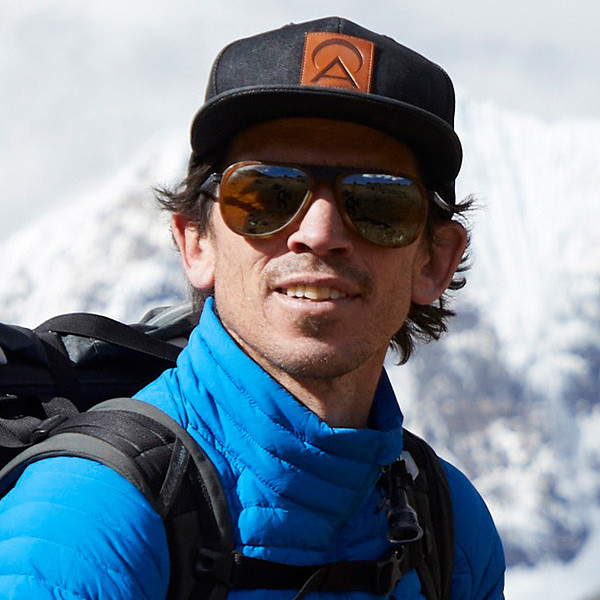
ADRIAN BALLINGER
Alpine Climbing Guide (AMGA/IFMGA)
In his two decades as a professional guide, Adrian has led more than a hundred clients to the summits of several 8000-meter peaks, including Everest, Lhotse, Manaslu, and Cho Oyu. He’s personally summited Everest eight times.

